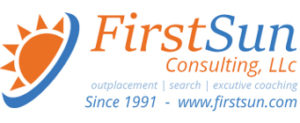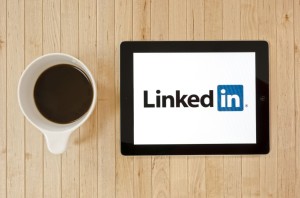#CareerAdvice : The Future of Work- Four #JobSkills the #HRLeaders of the Future will Need…It’s Time For the Oft-Maligned #HumanResources Function to Kick Old Habits & Drive Businesses Forward. That will Take HR Leaders with Broader Skill Sets.
How would you characterize your past employers’ HR departments? Chances are terms like “administrative,” “reactive,” “transactional,” or less-flattering terms come to mind.
Human resources originally evolved out of a personnel-based function rooted in administrative and compliance-driven tasks that historically haven’t been perceived as adding value to organizations in the same way that sales, marketing, or engineering do. And if you dissect old-school HR teams, you’ll find many practitioners who’ve spent most of their careers in the field; career paths have tended to be linear, rising from coordinator to manager, ultimately all the way up to the top chief human resources officer (CHRO). This career path meant the function was rarely infused with perspectives and practices from outside the field, and often led to insular ideas on what it means for an HR professional to support the business.
Related: What would an HR department that worked for employees actually look like?
Times are changing. According to a recent reportissued by HR Open Source (HROS), the community platform for HR professionals that I cofounded, 68% of current HR professionals have worked in fields outside of human resources. Inevitably, they’re steadily cross-pollinating the HR function with new skills and ideas that organizations should be all too eager to embrace. Still, modern HR requires more than a semantic shift from “human resources” to “people operations.” It requires broader capabilities and job skills than have typically been demanded of HR professionals in the past–allowing them to tackle critical issues ranging from sexual harassment to emerging recruiting technologies, not to mention a business and industry acumen to rival their executive peers.
With those needs in mind, here are a few big-ticket skills that HR leaders will need in order to adapt to the future of work.
Related: What is HR doing to make sure there aren’t more #MeToo moments?
1. LEARNING AGILITY
According to HR tech analyst William Tincup, there are over 24,000 HR software tools on the market today, with recent estimates valuing the market at some $400 billion. Artificial intelligence, bots, blockchain, automation, and technologies are rapidly transforming the HR technology ecosystem. But that’s no guarantee they’ll all be adopted, let alone implemented properly. Indeed, separating hype from substance and finding effective ways to harness emerging technologies in order to execute an effective people strategy is now a vital skill. This is particularly true in small to mid-size organizations where HR leaders often run lean teams without dedicated HR analysts to advise them.
So if you’re planning a career in HR or looking to hire human resources professionals who can lead your organization into the future, fluency with technology and the ability to learn about new tools and practices should be a top priority.
Like this Article ? Share It ! You now can easily enjoy/follow/share Today our Award Winning Articles/Blogs with Now Over 2.5 Million Growing Participates Worldwide in our various Social Media formats below:
FSC LinkedIn Network: www.linkedin.com/in/fscnetwork
Facebook: http://www.facebook.com/pages/First-Sun-Consulting-LLC-Outplacement-Services/213542315355343?sk=wall
Google+: https://plus.google.com/115673713231115398101/posts?hl=en
Twitter: Follow us @ firstsunllc
Question: Want the ‘the best/current articles/blogs on the web’ on Job Search, Resume, Advancing/Changing your Career, or simply Managing People?
Answer: Simply go to our FSC Career Blog below & type(#career, #leadership, #life) in Blog Search: https://www.firstsun.com/fsc-career-blog/
What Skill Sets do You have to be ‘Sharpened’ ?
Continue of article:
2. CREATIVITY
Something transformative seems to have happened over the last decade or so. As the field of “employer branding” matured, HR added a rarely used term to describe itself: “creative.” HR is now on the front lines of most company’s branding efforts, telling stories and shaping prospective hires’ perceptions of what it’s like to work in your organization. That’s pushing HR professionals to coordinate with marketing teams, making sure the organization’s people narratives support and align with its consumer branding. As a result, modern HR leaders need to think much more creatively than their predecessors. They should understand social media and digital engagement as well as the types of compelling and authentic messages to attract the right talent.
Related: 4 emotionally intelligent HR policies employees may suffer without
3. BUSINESS AND DATA ACUMEN
While hardly a new skill set for HR executives, the complexity of modern business and the expectation that HR leaders will be trusted advisers to the CEO make deeper business and operational knowledge all the more critical. Effective HR leaders now need a strong grasp of their organizations’ business model and market strategy, industry dynamics and competitive landscape, and how all those components impact human capital–from hiring and performance to diversity and inclusion. What’s more, HR leaders will need to develop adaptable people strategies that can evolve with the business.
So it’s no surprise that one of the most significant shifts in the field over recent years is the focus on data. In the recent HROS report, “people analytics” was the field with the highest increase in expected impact (22%) among HR professionals, 48% of whom said their organizations planned to invest in people-analytics software over the next three years. This means that modern HR leaders have growing access to enormous amounts of data on recruitment, retention, performance, productivity, employee satisfaction, and more. How they gather, evaluate, and ultimately interpret that data to drive their strategy is what’s really important.
4. STORYTELLING
Any effective leader who represents and manages employees needs great communication skills, and HR leaders are no exception. But skill with narratives that can influence and engage people–both inside and outside the organization–will be even more vital in the future. As human resources becomes an ever more public-facing function, HR leaders will need to be able to articulate an organization’s value propositions as an employer, not just as a company that sells a product or service. And being able to connect with a broad range of audiences through compelling stories is key. It’s what inspires people to rally behind a company’s mission and purpose–and, ultimately, decide to apply to jobs there and stick around once hired.
This list of emerging job skills for HR leaders is far from comprehensive. Empathy, compassion, emotional intelligence, knowledge of diversity and inclusion issues, coaching, and more are all vital elements of HR’s expanding role. Which traits might be more critical than others may depend on the leader, the company, and its culture. Still, a broad skill set is vital–not just to bring HR out of the back-of-house position where it’s long languished, but to bring entire companies forward into the future, too.
FastCompany.com | July 24, 2018












